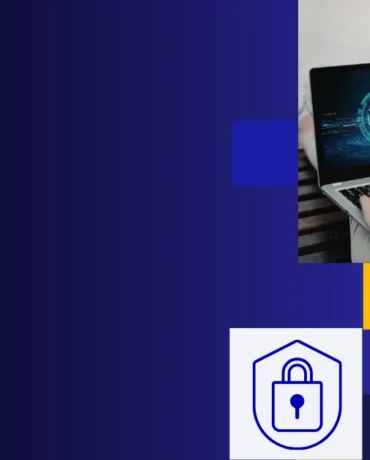The ISO 27001 certification process can be daunting for those new to it. As a company already holding ISO 27001 certification, we have created this guide to streamline the journey for you. It aims to give you a clear view of the process by outlining where to begin, identifying essential policies and controls, and preparing for audits to ensure a smoother, more successful experience.
This guide provides a detailed breakdown of the ISO 27001 certification process, from initial organizational preparation to each stage of the audit.
Read more: ISO 27001 Compliance: Why Should Business Have It?

ISO 27001 Implementation Phases
The path to ISO 27001 certification is a carefully planned journey. It begins with solid project planning and moves through detailed audits, ending with a strong, ongoing commitment to security. Following these steps systematically greatly boosts your chances of a successful outcome.

ISO 27001 Implementation Phases
Phase 1: Create Your ISO 27001 Implementation Plan
Before starting your ISO 27001 certification journey, it’s crucial to define who within your organization will lead the implementation process. Appoint a dedicated ISO 27001 project manager or team responsible for setting clear expectations, managing key milestones, and driving accountability. Strong leadership is essential to keep the ISO 27001 implementation on track and aligned with organizational goals.
Tips for a successful implementation:
- Appoint a project leader.
- Set definitive goals and objectives.
- Maintain regular progress and milestone tracking.
Securing executive buy-in early on is a critical success factor. Leadership support ensures adequate resources and reinforces the importance of achieving ISO 27001 compliance across departments. Consider whether hiring an ISO 27001 consultant is necessary to help interpret the standard, develop documentation, and streamline the process, especially if internal expertise is limited.
Familiarize yourself with the ISO/IEC 27001:2023 standard, including the updated Annex A controls (now reduced from 114 to 96) – leverage official ISO 27001 resources and tools to build a strong foundation. Ultimately, successful ISO 27001 implementation depends on clearly defined roles, ongoing progress tracking, and a strong commitment to cybersecurity best practices.
Key Steps:
- Obtain the company leadership’s commitment.
- Consider enlisting an ISO 27001 consultant.
- Study the ISO 27001 standards and controls (114 or 96 in ISO27001:2023).
- Review provided resources for initial understanding.
Throughout the process:
- Secure continuous leadership support.
- Utilize an ISO 27001 consultant’s expertise, if necessary.
- Refer to a detailed ISO 27001 guide for in-depth knowledge.
Phase 2: Define The Scope of Your ISMS
Every organization is distinct and handles varied data. Define the scope of your Information Security Management System (ISMS) to specify which information needs protection. The ISMS scope may cover the entire company or a specific unit. Decide what should be in the ISO 27001 certificate’s scope statement. Consider what service or product customers most want included in the certificate.
Phase 3: Perform a Risk Assessment and Gap Analysis
Conducting a formal, documented risk assessment is mandatory for ISO 27001 compliance. Start by evaluating your current security posture and identifying legal, regulatory, and contractual requirements.
If you lack internal compliance expertise, consider hiring an ISO 27001 consultant or using a compliance automation tool like Elusyn to streamline the process and align with security best practices.
Phase 4: Design and Implement ISO 27001 Policies and Controls
Once risks are identified, it’s crucial to determine your organization’s response: which risks to tolerate and which to address.
For the ISO 27001 certification audit, your auditor will review your risk response decisions. Evidence required includes a Statement of Applicability and a Risk Treatment Plan.
- Statement of Applicability (SoA): details the ISO 27001 controls and policies pertinent to your organization and is an initial document for the auditor’s review.
- Risk Treatment Plan (RTP): outlines how your organization addresses identified threats from the risk assessment.
The ISO 27001 standard suggests 4 risk response actions:
- Modify: Implement controls to reduce the likelihood of occurrence.
- Avoid: Prevent situations where the risk could occur.
- Share: Transfer risk to a third party through outsourcing or insurance.
- Accept: Acknowledge the risk when the cost of mitigation exceeds the potential damage.
Phase 5: Employee Training
Ensure all staff receive information security training as required by ISO 27001. This guarantees everyone understands data security’s importance and their role in achieving and maintaining compliance. One study showed that companies using a lot of security AI and automation saw their average data breach costs drop by USD 2.2 million, highlighting how effective well-trained staff, supported by advanced tools, can be.
Training sessions should be ongoing, not just once a year. They should include practical exercises like phishing simulations and social engineering drills to prepare employees for common attack methods. The goal is to instill a “security-first” mindset, moving past a simple checklist approach to one where security is a natural part of daily operations.

Employee Cybersecurity Training Session
Phase 6: Evidence Documentation and Collection
For ISO 27001 certification, auditors need proof of effective policies and controls functioning according to the standard. Gathering this evidence can be time-consuming, compliance automation software can streamline this process.
Phase 7: Certification Audit
An external auditor will evaluate your Information Security Management System (ISMS) to verify compliance with ISO 27001 requirements.
- Stage 1 Audit: Reviews documentation and ISMS readiness.
- Stage 2 Audit: Assesses implementation of security controls and business processes.
If both audits are successful, your organization will be awarded ISO 27001 certification, valid for three years.
Phase 8: Continuous Compliance
ISO 27001 requires continuous improvement of your ISMS. Regularly review its effectiveness, adapt to evolving risks, and update controls as needed. Conduct internal audits to identify and address gaps before external assessments, ensuring sustained compliance and security.
The ISO 27001 certification audit process
Once the ISMS is built, gap analysis is completed, controls are implemented, staff are trained, and evidence is collected, the audit process can begin. A formal audit happens in the following stages:
Stage 1: ISMS Design Review
- Review ISMS documentation to confirm policies and procedures are properly designed and compliant with ISO 27001 ISMS requirements (clauses 4-10).
- Auditors will identify nonconformities and opportunities for ISMS improvement.
After suggested changes are implemented, proceed to Stage 2.
Stage 2: Certification Audit
- Review business processes and controls for compliance with ISO 27001 ISMS and Annex A requirements.
- Auditors conduct a detailed assessment to determine if the organization meets all ISO 27001 requirements.
Upon successful completion of Stages 1 and 2, the ISO 27001 certification is valid for three years.
Surveillance Audits
- Conduct ongoing audits within the three-year certification period to ensure the ISO 27001 compliance program remains effective and maintained.
- Verify maintenance of the ISMS and Annex A controls, and that nonconformities or exceptions from the certification audit have been addressed.
Recertification Audit
- During the last year of the three-year certification, undergo a recertification audit.
- Similar to Stage 2, a detailed assessment is performed to determine if the organization meets ISO 27001 requirements for process/control design and operating effectiveness.
- After a successful recertification audit, the ISO 27001 certification is valid for another three years.
Most organizations spend 6-12 months preparing for and completing an ISO 27001 certification audit; however, if unprepared, the process can take over a year.
ISO 27001: Required Evidence for Certification Audits
To successfully navigate an ISO 27001 certification audit, organizations must demonstrate robust documentation and operational evidence for their Information Security Management System (ISMS). Your auditor will assess various facets, from policies to processes, to confirm compliance.
The following is a foundational list of evidence typically required:
Foundational ISMS Documentation:
- ISMS Scope
- Information Security Policy
- Statement of Applicability (SoA)
- Information Security Objectives
Risk Management Evidence:
- Information Security Risk Assessment Process
- Results of Information Security Risk Assessment
- Information Security Risk Treatment Process
- Results of Information Security Risk Treatment
Operational and Compliance Evidence:
- Evidence of Competence (e.g., training records, qualifications)
- Security Awareness Training Program and documented results
- Evidence of Monitoring and Measurement of ISMS performance
- Documented Internal Audit Process
- Evidence of Internal Audit Programs and their results
- Evidence of Management Review outcomes
- Records of Nonconformities and their remediations
- Evidence of Remediation results (for identified nonconformities)
- Evidence of Annex A Control Activities implementation

Required Evidence for Certification Audits
Key Takeaways
- ISO 27001 certification is a structured process: It involves distinct phases from planning and scope definition to risk assessment, control implementation, employee training, documentation, and ultimately, the certification audit.
- Continuous compliance is crucial: Achieving ISO 27001 is not a one-time event; it requires ongoing commitment to improve your Information Security Management System (ISMS) through regular reviews, internal audits, and adaptation to new risks.
- Audits are multi-staged: The certification process includes a Stage 1 (design review) and Stage 2 (implementation assessment) audit, followed by surveillance audits and a recertification audit every three years to ensure continued adherence.
- Documentation is essential: Successful certification relies heavily on robust documentation, including your ISMS Scope, Information Security Policy, Statement of Applicability (SoA), Risk Assessment results, and evidence of operational activities and compliance.
- Strategic partnerships can help: Organizations can benefit from appointing a dedicated project leader, securing executive buy-in, and considering ISO 27001 consultants or compliance automation tools to streamline the process, especially if internal expertise is limited.
Begin Your ISO 27001 Journey Today
Achieving ISO 27001 certification is a powerful investment in your organization’s ability to withstand cyber threats. By diligently following these structured steps, preparing thoroughly for audits, and dedicating your business to ongoing improvement, you can protect your information and earn a certification recognized worldwide. For expert guidance and tailored support, contact Sunbytes today and let us help you navigate the ISO 27001 certification process with confidence.
Frequently Asked Questions
ISO/IEC 27001, or ISO 27001 for short, is an international standard for establishing, implementing, and maintaining an Information Security Management System (ISMS). It provides a framework for organizations to protect their information assets from various threats, including data breaches, cyberattacks, and other security incidents.
To obtain ISO 27001 certification, an independent, locally recognized certification body must conduct an ISO 27k audit. Successful completion of this audit leads to the granting of the certification.
ISO 27001 documents differ because the ISO standard is flexible and risk-based. Each organization has unique risks, scope, size, and business context, so their controls and documentation are tailored to fit. Different consultants, tools, and regulatory needs also lead to variations.
While ISO 27001 mandates vulnerability management as per Annex A 12.6.1, it does not explicitly require penetration testing. A penetration test of course can be used to satisfy this control. However, depending on industry-specific controls and recent NIS2 regulations within the EU, businesses are increasingly anticipating independent penetration tests. Therefore, incorporating penetration testing as an ISMS control not only fulfills the 12.6.1 requirement but also aligns with evolving industry expectations.
Both are necessary for successful certification. ISO 27001 audits assess compliance with both the ISO 27001 standard and an organization’s own policies and procedures. Audits verify adherence to the standard’s requirements (risk management, Annex A controls, …) and ensure the organization is following its ISMS documentation. Both aspects are crucial for certification success.
Laten we beginnen met Sunbytes
Laat ons uw eisen voor het team weten en wij nemen meteen contact met u op.

